Caution: Spark plugs should only be replaced when the engine is cold or slightly warm. Removing spark plugs while the engine is hot can damage the threads in the cylinder head.
1. For spark plug installation details, refer to Section 7 Chapter 5. The types of candles used and their interelectrode gaps are indicated in Specifications for Chapter 5.
2. An ignition coil is installed directly on each candle. Therefore, to remove the spark plug, you must remove the ignition coil from it (see Section 7 of Chapter 5). If complete removal of the coil is not required, its connector can be left on, but the coil wiring must first be released from the holders so that it does not stretch.
3. To remove the spark plugs, use a special long spark plug wrench, for example, No. 3122B.
4. Assess the condition of the spark plugs (see illustrated insert). If necessary, correct possible problems that can be judged by the condition of the candles. Charcoal deposits on the electrodes can be removed with compressed air under pressure, do not use a wire brush for this purpose. Checking and adjusting the electrode gap in the intervals between replacing the candles is not required.
5. When new spark plugs are installed and the old ignition coils remain, a bead of sealant G 052 141 A2 with a diameter of 1-2 mm should be applied to the connector of the ignition coil from the side of the spark plug (see resist. illustration). This lubricant prevents the connector seal from sticking to the spark plug.
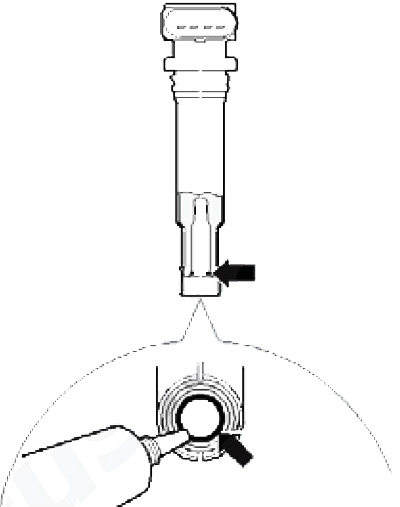
14.5 Scheme for applying lubricant to the ignition coil connector
Note: On new ignition coils, the spark plug connector is already lubricated.
6. Installation is carried out in the reverse order. Tighten the spark plugs to the specified Specifications effort; connect the wiring in the same places and lay the wiring as it was done before removal.
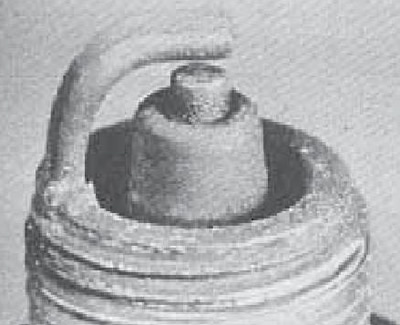
coal deposits
Symptoms: The presence of soot indicates an over-rich air-fuel mixture or a weak spark. Causes misfiring, difficult starting and engine instability.
Recommendations: Check if the air cleaner is clogged. Try using plugs with a longer insulator, which increases fouling resistance.

oiling
Symptoms: Lubrication of the spark plug is caused by wear on the valve stem seals. Oil enters the combustion chamber through worn valve guides or piston rings. Causes misfiring, difficult starting and engine instability.
Recommendations: Carry out mechanical restoration work and replace the spark plugs.
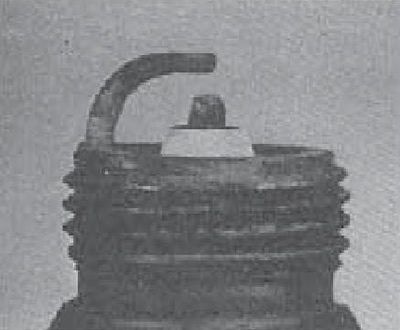
Overheat
Symptoms: Porous, white insulator, electrode erosion and absence of any deposits. This will shorten the life of the spark plug.
Recommendations: Check if the glow rating of the installed plugs meets the requirements of the Specifications, if the ignition timing is set correctly, if the air-fuel mixture is too lean, if there are vacuum leaks in the intake pipeline and if the valves are stuck. Also check the coolant level and check if the radiator is clogged.
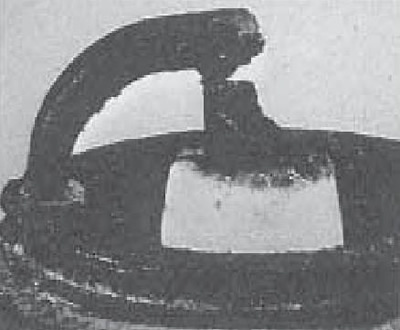
Too early ignition
Symptoms: The electrodes are melted. The insulator is white, but may be contaminated due to misfiring or foreign particles entering the combustion chambers. May lead to engine failure.
Recommendations: Check the glow number of the installed candles, the ignition timing, the quality of the mixture (isn't it too poor), whether the cooling system is clogged and the lubrication system is functioning properly.
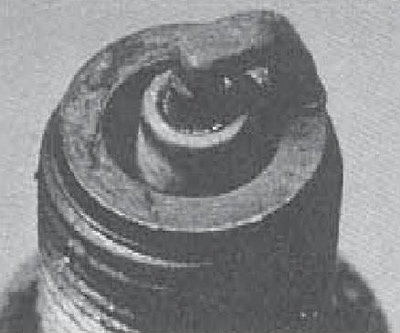
Electrically conductive gloss
Symptoms: The insulator has a yellowish color and a polished appearance. It speaks of a sudden increase in temperature in the combustion chambers during sharp acceleration. At the same time, ordinary deposits are melted, acquiring the appearance of a varnish coating. Causes misfiring at high speeds.
Recommendations: Change spark plugs (colder, while maintaining driving style).
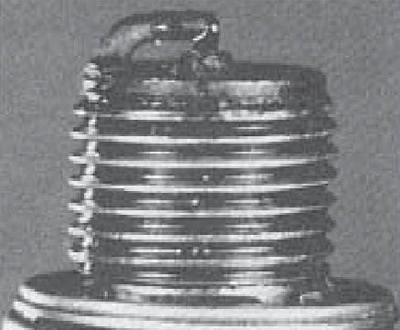
Closing the electrodes
Symptoms: Waste products of combustion enter the interelectrode space. Solid deposits accumulate, forming a jumper between the electrodes. Leads to ignition failure in the cylinder.
Recommendations: Remove deposits from the interelectrode space.

The normal state of the candle
Symptoms: Gray-brown color and slight wear of the electrodes. The number of glow plugs corresponds to the type of engine and its general condition.
Recommendations: When replacing spark plugs, use spark plugs of the same type.

Ash formation
Symptoms: Soft brownish deposits on one or both spark plug electrodes. The source of their formation is the additives used in oil and/or fuel. Excessive buildup can insulate the electrodes and cause misfiring and engine instability when accelerating.
Recommendations: If deposits build up quickly, change the oil seals to prevent oil from entering the combustion chambers. Try changing the brand of fuel.
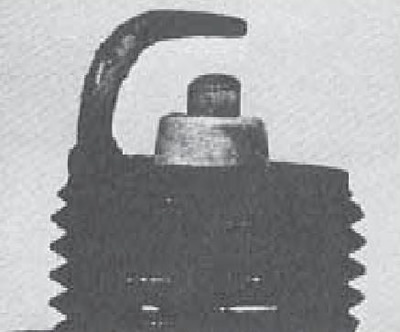
Wear
Symptoms: Rounding of the electrodes with a slight accumulation of deposits at the working end. The color is normal. Causes engine start difficulty in cold, wet weather and increased fuel consumption.
Recommendations: Replace the spark plugs with new ones of the same type.

Detonation
Symptoms: Insulators may be chipped or cracked. Insulator damage can also result from inaccurate spark plug gap adjustment. May damage pistons.
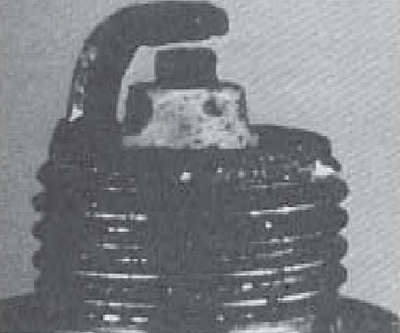
splashing
Symptoms: After misfiring for a long period of time, deposits can loosen while maintaining the operating temperature in the combustion chamber. At high speeds, deposits flake off the piston and adhere to the hot insulator, causing misfiring.
Recommendations: Replace spark plugs or clean and reinstall old ones.
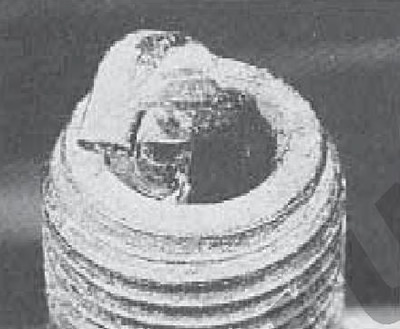
Mechanical damage
Symptoms: May be caused by foreign material entering the combustion chamber or by the piston hitting a spark plug that is too long. Lead to cylinder failure and piston damage.
Recommendations: Remove foreign particles from the engine and/or replace the spark plugs.
